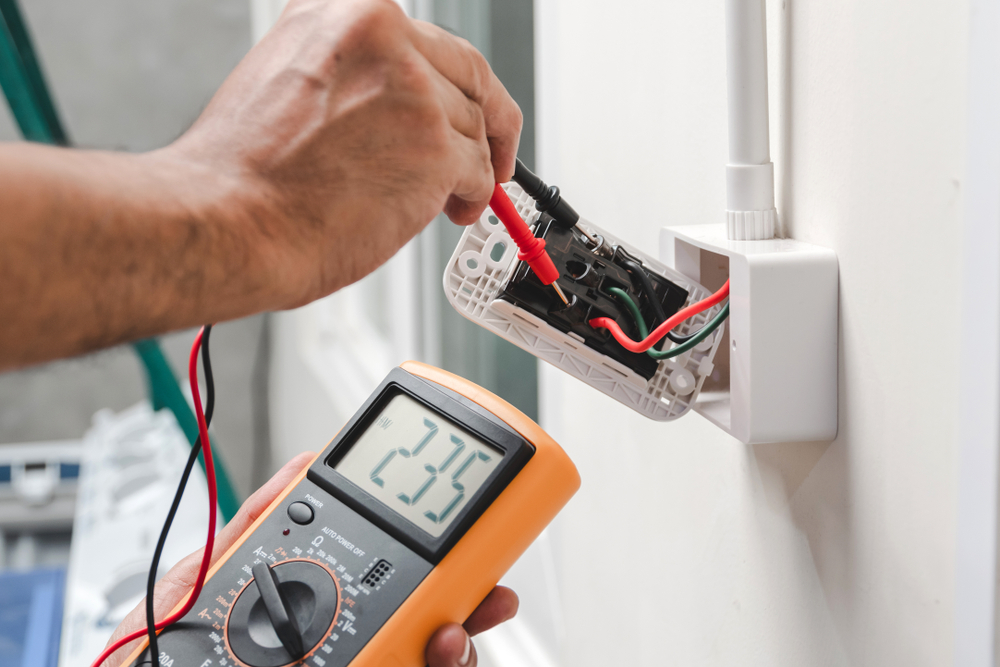Introduction
Wiring installation is a crucial aspect of any building project, ensuring the safe and efficient distribution of electricity. In Malaysia, electrical installations must adhere to strict regulations set by Suruhanjaya Tenaga (Energy Commission of Malaysia) to prevent hazards such as short circuits, electrical fires, and power failures. Proper planning involves assessing electrical needs, selecting the right wiring system, ensuring circuit protection, and considering energy efficiency. By following the correct guidelines, homeowners and businesses can achieve a safe, compliant, and future-proof electrical system.
Compliance with Malaysian Electrical Regulations
All wiring installations in Malaysia must comply with Suruhanjaya Tenaga (Energy Commission of Malaysia) regulations. The Electricity Supply Act 1990 (Act 447) and MS IEC 60364 standards set the safety requirements for electrical installations. Only Certified Electrical Contractors (CEC) registered with the Energy Commission are allowed to perform wiring installations. Proper grounding and earthing are essential to prevent electrical shocks and surges. Additionally, circuit breakers, including Miniature Circuit Breakers (MCBs) and Residual Current Devices (RCDs), must be installed to protect against overload and leakage issues.
Assessing Electrical Needs
Before starting any wiring project, it is crucial to assess the electrical needs of the building. This includes calculating the total electrical load based on the number of appliances, lighting fixtures, and electrical devices. It is also important to ensure that there are enough power points (sockets), especially in high-use areas like kitchens and living rooms. For high-power appliances such as air conditioners, refrigerators, and water heaters, dedicated circuits should be planned to prevent overloading. Additionally, emergency power solutions, such as Uninterruptible Power Supplies (UPS) or backup generators, should be considered for critical operations.
Choosing the Right Wiring System
There are several types of wiring systems used in Malaysia, each suited for different applications. Concealed wiring is the most common choice for residential and commercial buildings due to its aesthetic appeal and safety benefits. Surface wiring is often used in factories and temporary setups where easy access is required. Conduit wiring, which uses PVC or metal conduits for additional protection, is recommended for commercial and industrial buildings. For modern homes, smart wiring is becoming increasingly popular, allowing for seamless integration of electrical, internet, and security systems.
Selecting the Right Wires & Cables
Using high-quality and SIRIM-approved wires and cables that meet MS 2112-3:2009 standards is essential for safety and durability. Copper wiring is generally preferred over aluminum due to its superior conductivity and longevity. Selecting the correct wire gauge is also crucial; for example, 2.5mm² wires are suitable for sockets, 1.5mm² wires for lighting, and 4mm² or above for high-load appliances. In critical areas like kitchens and commercial buildings, fire-resistant cables should be used. For outdoor installations, weatherproof and UV-resistant cables are necessary to withstand environmental conditions.
Electrical Panel & Circuit Protection
A properly installed main distribution board (DB box) ensures an organized and safe electrical system. Each circuit should have Miniature Circuit Breakers (MCBs) to prevent overloading. Residual Current Devices (RCDs) are also important for detecting electrical leakages and preventing electrocution. Additionally, ensuring proper earthing and bonding reduces the risk of electrical faults, providing a safer environment for occupants.
Positioning of Electrical Outlets & Switches
The positioning of electrical outlets and switches must follow MS IEC 60364 guidelines for safety and convenience. Light switches should be installed at a height of 1.2m – 1.5m, making them easily accessible. Power sockets should be placed 300mm – 400mm above floor level to prevent electrical hazards, especially in households with children. For outdoor and wet areas like bathrooms and kitchens, weatherproof sockets (IP-rated) should be used to prevent water damage. Additionally, planning extra outlets for future needs, such as smart home systems and additional appliances, ensures a more flexible and adaptable electrical system.
Energy Efficiency & Future-Proofing
To reduce electricity consumption and increase sustainability, LED lighting and energy-saving appliances should be prioritized. The installation of solar panel systems can also help offset energy costs and contribute to environmental conservation. In common areas, motion sensors or timers can be used to automatically control lighting and reduce wastage. For high-speed internet and communication needs, using CAT6 or fiber optic cables is recommended. Additionally, allocating extra conduits for future electrical upgrades can minimize the need for major rewiring in the future.
Hiring a Qualified Electrician
Electrical work must always be performed by a Suruhanjaya Tenaga-licensed electrician to ensure compliance with national regulations. After installation, it is important to request an Electrical Compliance Certificate (ECC) to verify that the wiring meets legal standards. A final electrical safety inspection should also be conducted before switching on the power supply to confirm that all components are correctly installed and functioning safely.
Conclusion
A well-planned wiring installation in Malaysia guarantees safety, efficiency, and compliance with national regulations. By following proper electrical standards, choosing high-quality materials, and working with licensed electricians, individuals can prevent electrical hazards and ensure long-term reliability. Additionally, considering energy efficiency and future expansion needs will help create a sustainable and cost-effective electrical system. Proper planning not only enhances the functionality of a space but also protects lives and property from potential electrical risks.

